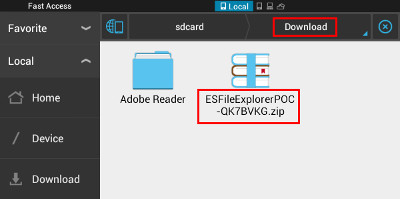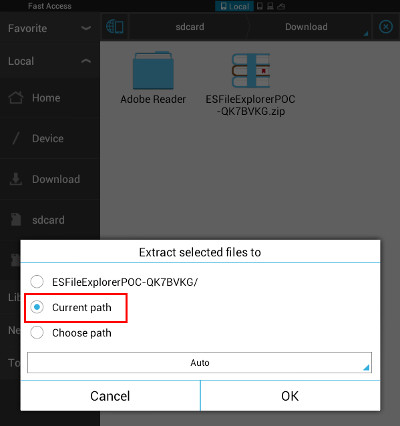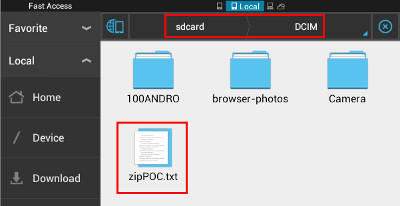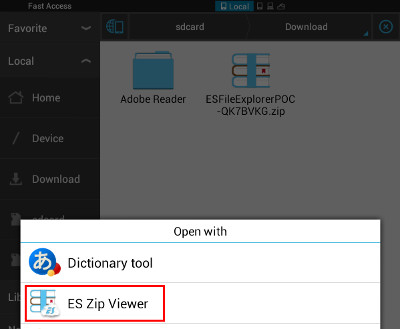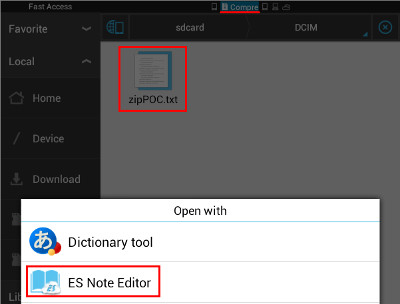

| vuln.sg Vulnerability Research Advisory |
by Tan Chew Keong
 Summary
Summary
A ZIP archive extraction directory traversal vulnerability has been found in ES File Explorer. When exploited, this vulnerability allows an anonymous attacker to write files to arbitrary locations within the SD card of the user's Android device.  Tested Versions
Tested Versions
 Details
Details
This advisory discloses a ZIP archive extaction directory traversal vulnerability in ES File Explorer. When exploited, this vulnerability allows an anonymous attacker to write files to arbitrary locations within the SD card of the user's Android device. Example 1 - Directory Traversal in ZIP Archive Extraction When extacting compressed files from a ZIP archive, the ZIP extraction functionality does not properly sanitise compressed files that have directory traversal sequences in their filenames. By tricking a user to extract a specially crafted ZIP archive containing files with directory traversal sequences in their filenames, an attacker can write files to arbitrary locations within the SD card of the user's Android device, possibly overwriting the user's existing files. For example, a malicious ZIP archive can contain a compressed file with the following filename: /../../../../../../../../mnt/sdcard/DCIM/zipPOC.txt Example 2 - Directory Traversal in ES Zip Viewer When the user views a compressed file within a ZIP archive, the ES ZIP Viewer functionality in ES File Explorer will extract the compressed file into the /sdcard/Android/data/com.estrongs.android.pop/tmp/zip temporary directory. ES ZIP Viewer does not properly sanitise compressed files that have directory traversal sequences in their filenames. By tricking a user to view a compressed file with directory traversal sequences in its filename, an attacker can potentially overwrite known files within the SD card of the user's Android device. For example, a malicious ZIP archive can contain a compressed file with the following filename: /../../../../../../../../mnt/sdcard/DCIM/zipPOC.txt When the user views zipPOC.txt using ES ZIP Viewer, it will be temporarily extracted to: /sdcard/Android/data/com.estrongs.android.pop/tmp/zip/../../../../../../../../mnt/sdcard/DCIM/zipPOC.txt This causes it to be written into /mnt/sdcard/DCIM/zipPOC.txt.  POC / Test Code
POC / Test Code
Please download the POC ZIP archive here and follow the instructions below. Instructions for testing Directory Traversal in ZIP Archive Extraction (Example 1):
Hence, by tricking a user to extract a specially-crafted ZIP archive, an attacker can potentially exploit this issue to write files into arbitrary locations within the SD card in the user's Android device, or to overwrite files in known locations within the SD card. For example, an attacker who is aware of the filenames of the user's photo in the /mnt/sdcard/DCIM/ directory can exploit this vulnerability to overwrite the user's photo files. Instructions for testing Directory Traversal in ES Zip Viewer (Example 2):
 Patch / Workaround
Patch / Workaround
Avoid extacting untrusted ZIP archives. Update to version 3.0.4 via Play Store when released.  Disclosure Timeline
Disclosure Timeline
2013-05-19 - Vulnerability Discovered. |
| Contact |
| For further enquries, comments, suggestions or bug reports, simply email them to |

